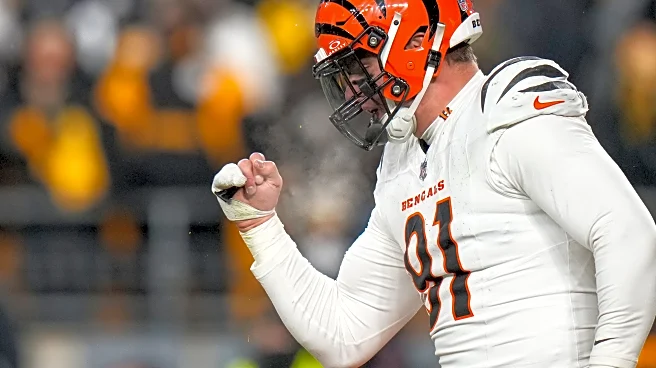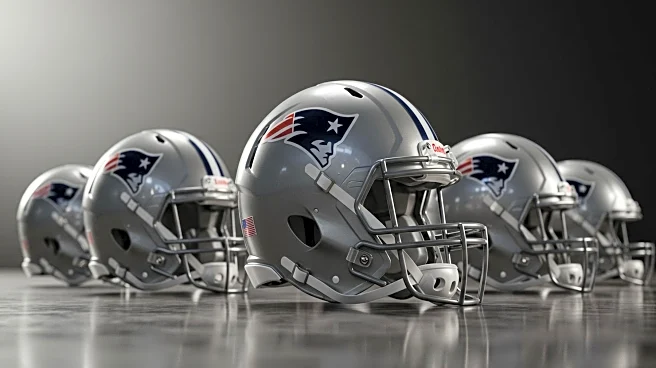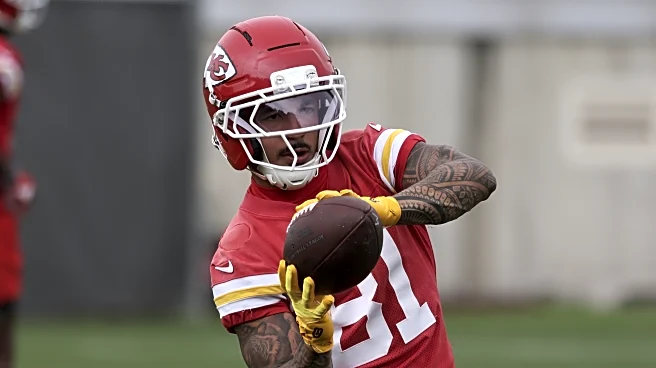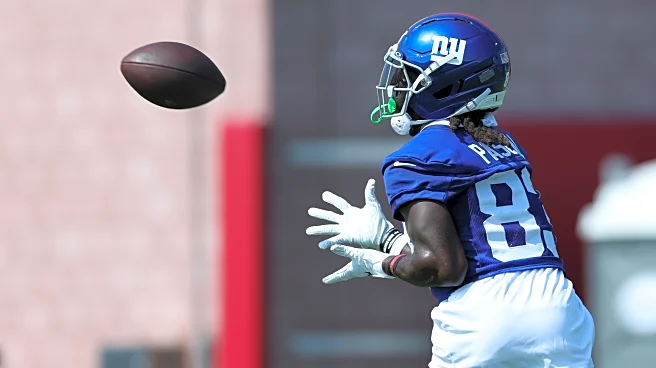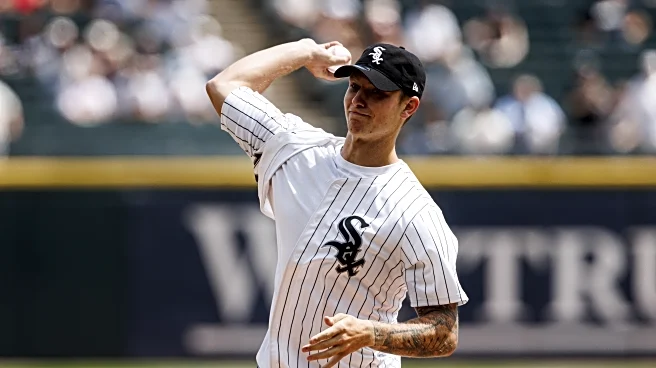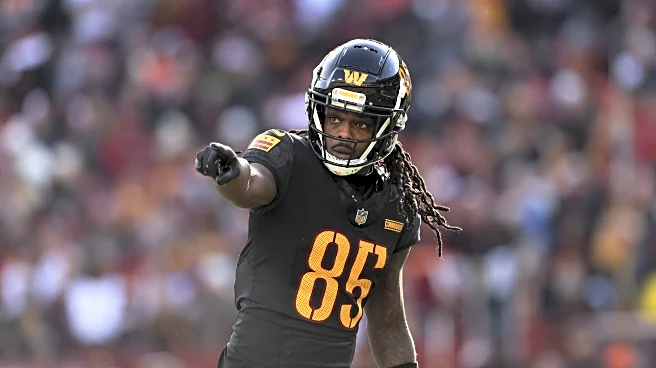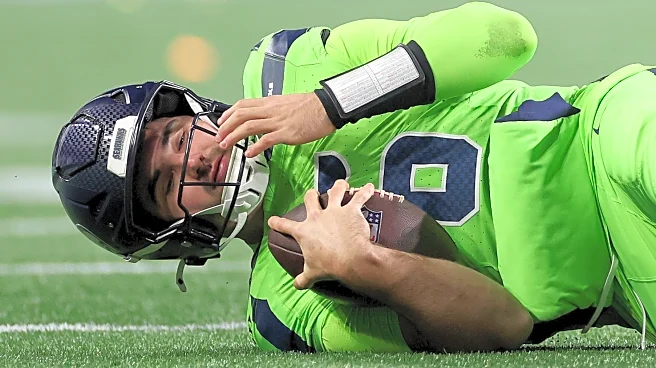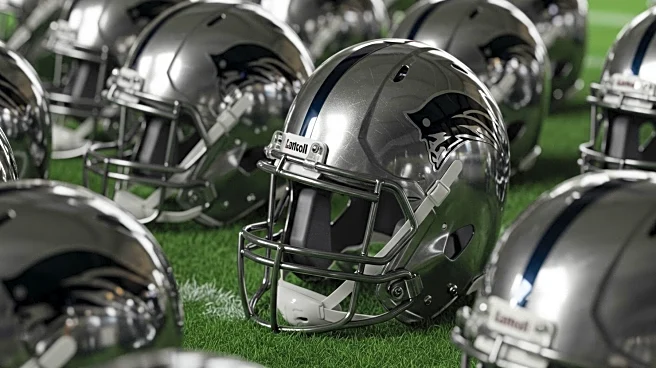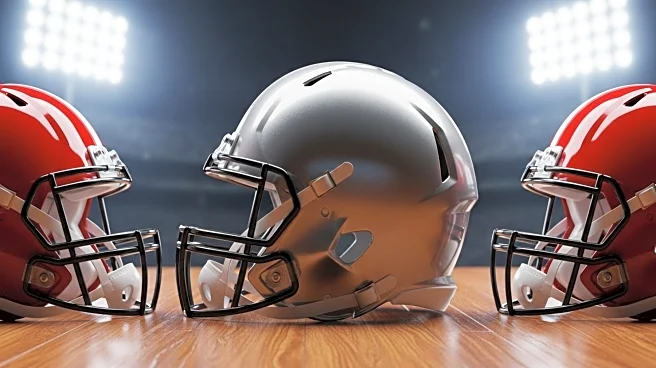What is the story about?
What's Happening?
As the NFL preseason concludes, teams are actively engaging in trades to finalize their 53-man rosters before the regular season begins. Players facing potential cuts or those whose roster spots are challenged during training camp are being traded. Notable trades include quarterback Sam Howell, running back Brian Robinson Jr., defensive tackle Harrison Phillips, and wide receiver Skyy Moore, who have been exchanged for late-round picks or swaps. Teams like the Commanders and Vikings have facilitated trades by absorbing some financial costs to secure better draft pick compensation. The article discusses potential trades that could occur, focusing on players who might fill gaps due to injuries or depth requirements. The trades are generally low-cost, involving swaps of Day 3 picks, as teams have limited budgets to acquire veteran stars.
Why It's Important?
These trades are crucial for teams to address immediate roster needs and improve their chances for the upcoming season. By acquiring players who can fill specific roles, teams can mitigate the impact of injuries and enhance their depth. The trades also reflect strategic financial decisions, as teams navigate salary cap constraints while aiming to strengthen their rosters. For players, these trades offer opportunities to secure positions and demonstrate their value in new environments. The broader impact includes potential shifts in team dynamics and performance, influencing playoff prospects and fan engagement.
What's Next?
As the regular season approaches, teams will continue to assess their rosters and make final adjustments. The trades may lead to further negotiations, especially for players with significant contracts or those in high-demand positions. Teams will monitor the performance of newly acquired players to ensure they meet expectations and contribute effectively. Additionally, the financial implications of these trades may prompt teams to explore creative solutions to manage salary cap constraints while maintaining competitive rosters.
Beyond the Headlines
The trades highlight the complex interplay between financial management and team performance in the NFL. Teams must balance immediate needs with long-term strategic goals, considering both player potential and financial constraints. The decisions made during this period can have lasting effects on team culture, player morale, and fan loyalty. Moreover, the trades underscore the importance of scouting and player evaluation, as teams seek to identify undervalued talent that can provide significant returns.
AI Generated Content
Do you find this article useful?


